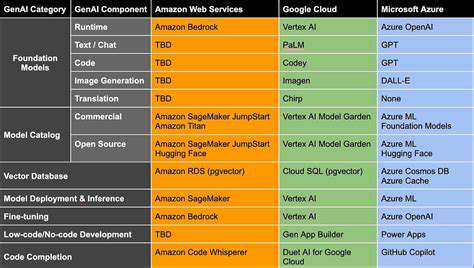Essential Gardening Tools for Home Gardeners
Choosing the Right Digging Tools
Selecting the appropriate digging tools is crucial for successful gardening. Different tools cater to various tasks, from loosening compacted soil to carefully transplanting delicate seedlings. Consider the size and type of your garden, the soil conditions, and your personal preferences when making your selections. A good quality spade, for example, can make the difference between a smooth digging experience and a frustrating one, especially when dealing with tough clay or rocky soil.
For tasks requiring more precision and smaller areas, a trowel is an invaluable tool. Its smaller size allows for detailed work, perfect for planting flowers, herbs, or vegetables in rows. A cultivator, on the other hand, is ideal for aerating soil and eliminating weeds, improving the overall health and structure of your garden bed. Careful consideration of your needs will help you choose the right tools for your garden.
The Importance of Quality Spades and Shovels
High-quality spades and shovels are essential for effectively working with the soil. Their sturdy construction ensures longevity and reduces the effort required for digging, enabling you to efficiently prepare your garden beds for planting. A durable spade, for instance, will withstand repeated use, making it a worthwhile investment for long-term gardening success.
When choosing spades and shovels, pay attention to the material. High-carbon steel is often preferred for its strength and resistance to rust, extending the life of the tool. A well-maintained spade or shovel will be a valuable asset in your gardening toolkit, allowing you to create optimal conditions for your plants to thrive.
Essential Hand Tools for Precise Planting
For precise planting and transplanting, a range of hand tools is necessary. These tools, including trowels, hand forks, and hand rakes, allow for meticulous work, ensuring the proper placement of seedlings and the avoidance of damage. A sharp trowel, for instance, is crucial for carefully digging planting holes and gently handling delicate roots.
The Role of Cultivators and Hoes
Cultivators and hoes play a vital role in maintaining soil health. Using these tools to aerate the soil, loosen compacted areas, and control weeds promotes better drainage and nutrient absorption. A cultivator, with its tines, effectively breaks up compacted soil, making it easier for water and air to reach the roots of your plants. A hoe, on the other hand, is ideal for removing weeds, ensuring that your plants receive the necessary nutrients and space to flourish.
Maintaining Your Tools for Longevity
Proper maintenance is key to ensuring your digging and planting tools last for years to come. Regular sharpening, cleaning, and lubrication will significantly extend their lifespan. Sharpening dull blades prevents damage to the roots of your plants and reduces the effort required for digging. Regular cleaning removes dirt and debris, preventing rust and maintaining the tool's integrity. Protecting your tools from the elements with proper storage will further contribute to their longevity.
Watering and Weeding Tools: Keeping Your Plants Hydrated and Healthy
Watering Tools for Every Need
Watering your garden effectively is crucial for plant health, and the right tools can make a significant difference. From delicate seedlings to robust shrubs, various watering tools cater to specific needs. A watering can, with its adjustable spout, is perfect for precise watering of individual plants, especially in containers. For larger areas, a hose with various spray attachments offers flexibility and coverage, allowing you to adjust the water flow and pattern according to the plant's requirements. Consider the size of your garden and the types of plants you're growing when selecting your watering tools, ensuring you have the right equipment to keep your plants hydrated and thriving.
Soaker hoses and drip irrigation systems are excellent choices for watering deeply and efficiently. These systems deliver water directly to the roots, minimizing water waste and promoting healthy root development. The consistent and controlled water delivery of these systems helps to prevent overwatering and root rot, critical for maintaining plant health, particularly during dry spells. Investing in the appropriate watering tools can save you time, water, and energy, resulting in a thriving garden.
Weeding Tools for a Clean Garden
Keeping weeds under control is essential for a healthy garden. Weeding tools range from simple hand tools to more advanced equipment. Hand tools, like weeding forks and trowels, are ideal for smaller gardens or for removing individual weeds. These tools allow for precise removal, minimizing damage to surrounding plants. A hoe or cultivator is also helpful for controlling broad areas of weeds, particularly those emerging from the soil. Using these tools regularly helps prevent weeds from taking over and competing with your plants for essential nutrients and water.
For larger areas, consider using a weed eater or string trimmer, which can efficiently remove weeds and other unwanted vegetation. However, be mindful of the surrounding plants and environment when using these tools. Proper technique and tool maintenance are essential to avoid damage to your plants and ensure the safety of yourself and others. Regular weeding helps maintain the health of your garden by preventing weeds from competing with your plants for resources.
Using a combination of tools tailored to the scale and nature of your weeding needs can make a significant difference to the overall health and appearance of your garden. A clean garden is a healthy garden, and the right weeding tools are essential for achieving that goal.
Essential Weeding and Watering Techniques
Beyond the tools themselves, understanding proper techniques for watering and weeding is crucial for successful gardening. Watering deeply, rather than frequently, encourages healthy root growth. Water deeply enough to moisten the soil down to the roots of the plants. Consistent watering, especially during dry periods, maintains plant health and prevents stress. Proper watering techniques, paired with the right tools, ensure that your plants receive the hydration they need to thrive. Understanding the specific watering needs of different plants is essential for effective watering.
When weeding, consider the type of weed you're dealing with and the surrounding plants. Pulling weeds carefully, avoiding damage to nearby roots, is crucial. Use the appropriate tools for the job and be mindful of your surroundings. Regular weeding prevents weeds from taking over and competing with your plants for essential resources. Consistent weeding and watering practices are essential to maintaining a healthy and vibrant garden.
Pruning and Harvesting Tools: Maintaining Your Plants and Enjoying the Fruits of Your Labor
Selecting the Right Pruning Tools
Choosing the right pruning tools is crucial for effective pruning and minimizing damage to your plants. Sharp, high-quality tools are essential. A dull blade can crush and tear plant tissue, leading to infection and hindering healing. Consider the size and type of plants you'll be pruning. For small branches, hand pruners or secateurs are ideal. For larger branches, lopping shears or pruning saws are necessary. Always ensure your tools are clean and sanitized to prevent the spread of diseases between plants.
Investing in good quality pruning tools is a wise investment. These tools will last longer, perform better, and reduce the risk of injury to you and your plants. Proper maintenance, such as sharpening blades and cleaning them after each use, will keep them in top condition for years to come. This will also save you money in the long run compared to constantly replacing dull or damaged tools.
Harvesting Tools: Ensuring a Smooth and Efficient Process
Different fruits and vegetables require different harvesting tools. For delicate berries, soft-handled picking baskets or small, gentle-grip clippers are best to avoid bruising or damaging the produce. For fruits like tomatoes or peppers, sturdy picking tools and gloves are necessary to protect your hands and ensure the fruit is harvested without damage. Using the right tools ensures that the harvest is preserved at its best quality and minimizes any potential damage to the plant.
Proper Use and Maintenance of Your Tools
Proper use of pruning and harvesting tools is essential to prevent injuries and maintain the longevity of the tools themselves. Always wear appropriate safety gear, such as gloves, when using any tool. Ensure the blades are sharp to avoid tearing plant tissue. Follow the manufacturer's instructions for proper use and maintenance. Regularly sharpening blades and cleaning tools will improve their efficiency and extend their lifespan. Proper maintenance will also prevent the spread of diseases between plants.
Regularly sharpening your pruning tools is crucial for their effectiveness and to prevent plant damage. This simple step can make a huge difference in how smoothly and efficiently you prune your plants. Cleaning your tools after each use is equally important to prevent the spread of plant diseases. By taking the time to properly maintain your tools, you're ensuring not only a more efficient process but also protecting the health of your plants.
Safety First: Protecting Yourself and Your Plants
Safety should always be a top priority when using pruning and harvesting tools. Wearing appropriate safety gear, including gloves and eye protection, is crucial to prevent injuries. Properly maintaining your tools, ensuring they're sharp and in good working order, also minimizes the risk of accidents. Knowing how to use the tools correctly and following instructions will prevent injuries and ensure a safe and successful harvest.
Understanding the proper use of your equipment will greatly reduce the risk of injury and plant damage. Following manufacturer guidelines and using the right tools for the job are critical. This not only protects you but also ensures your plants are handled with care, promoting their health and longevity. By prioritizing safety, you can enjoy a more productive and less stressful gardening experience.
Storage and Organization: Keeping Your Tools in Tip-Top Shape

Efficient Storage Solutions
Effective storage and organization are crucial for maintaining a clutter-free and productive environment. Properly storing items not only saves space but also promotes a sense of calm and order. Thinking strategically about how you store items can minimize wasted space and make finding what you need a breeze. Careful planning is key to maximizing the potential of any storage space, whether it's a small closet or a large warehouse.
Investing in high-quality storage containers and organizers can significantly impact your overall organization. These solutions can help you categorize and group items logically, creating a more efficient and aesthetically pleasing space. Choosing the right containers for the right items ensures that everything has a designated place, making it easier to locate and maintain order.
Categorization and Labeling
Categorizing and labeling your belongings is a fundamental aspect of successful storage and organization. A well-organized system allows you to quickly locate specific items, saving valuable time and reducing frustration.
Consistent labeling practices, whether using color-coded labels or detailed written descriptions, are essential for maintaining a clear and logical system. This consistent approach ensures that everyone using the storage space understands the system and can easily find what they need.
Consider using different colors for different categories or creating a simple system of abbreviations or symbols. This will make the process of finding items much more efficient.
Space Optimization Techniques
Maximizing available space is key to effective storage and organization. Employing vertical storage solutions, such as tall shelves or stackable containers, can significantly increase storage capacity in any room. Understanding the dimensions of your storage space and the items you need to store will help you choose the most appropriate solutions.
Another valuable technique is to utilize under-utilized spaces. Think about the areas under beds, in closets, or even in unused corners of rooms. These often-overlooked spaces can provide surprising amounts of additional storage.
Maintenance and Review
Maintaining a well-organized storage system requires consistent effort and regular review. Regular decluttering and purging of unwanted items are essential to maintaining efficiency and preventing the system from becoming overwhelmed.
Regularly checking your storage system and updating labels, categories, and locations, is crucial for maintaining a functional setup. This ensures that the system remains effective over time and continues to meet your needs. Taking the time to review and adjust your system periodically is a vital step toward maintaining its effectiveness and maximizing its benefits.


![Guide to Learning [Specific Software, e.g., Excel]](/static/images/31/2025-04/CreatingandFormattingCharts3AVisualizingYourData.jpg)








